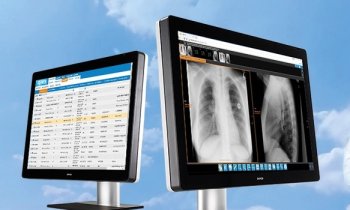e-health entering era of ‘normality' says industry leader
e-health is now very much on the political agenda, recognised as a key enabler for delivering better healthcare and choice for patients. In this article Dr Harald Deutsch, Vice President CSC Healthcare EMEA, explains why he believes we are entering an era of the “normalisation” of e-health and how the convergence of technology standards will be a key driver for success. He also explores how healthcare – and e-health – could be a winner from the financial crisis.
Time after time, we hear from industry when something new comes along – like cloud computing, for example – that it’s a “new era” for health, that it’s a breakthrough, that it’s something revolutionary. Then, on the other hand, there are some groups that are saying that there is an e-health speculative bubble in Europe which is going to burst.
Normalisation of e-health
I would say that neither of these positions is correct. What we are currently observing is “normalisation” of e-health. By that I mean that e-health is becoming recognised as the way we do things – and as a means of doing them better – in the day-to-day decisions taken by politicians and managers of Healthcare IT.
For many years, industry has characterised e-health as innovation – the leading edge. But now it’s more about practical and operational systems such as PACS (Picture Archiving and Communication System) and message-sharing – what I’d call a pretty “known” type of IT, which is easily replicable across different countries.
Look at the financial crisis of 2008 – governments have responded, not by cutting back on e-health but by adding it to their stimulus packages. E-health is becoming down-to-earth – normalised.
Convergence of standards key
We’re not coming to this from a bad position; the basic infrastructure is widely there. For example, if you look at the online access of physicians and GPs in Europe, the majority of the developed countries in the EU have penetration of 98 per cent. Even in countries on the periphery, such as Romania, it’s 68-70 per cent.
Certainly there are still hurdles to bringing in solutions across different countries, but I’d say these barriers are in freefall; they are sinking every day.
There are, I believe, three drivers to making this happen.
Firstly, in Europe, there continues to be a movement towards adherence to standards – maybe we are not yet sufficiently standardised, but there are no “island” solutions on the horizon. Within the healthcare industry it is known which standards are necessary and will survive so this should no longer form a barrier to investment.
Secondly, the EU itself is not only embracing, it is coordinating and partly funding technology convergence. More and more applications are used across Europe, including e-prescribing and PACS, and it’s much more synchronised than it was three to five years ago.
Thirdly, there are a handful of small consultancies which are transferring and sharing their concepts across different countries in Europe. Obviously that leads to a measure of convergence in systems. It brings down hurdles and is serving a larger part of Europe every day.
Making solutions work
Common standards may be an essential part of making solutions work across Europe, but that doesn’t mean there should be a priority on developing new ones – what we need to do is make better use of those we already have.
We need to see those who are putting out tenders insisting on bidders complying with standards. This isn’t happening 100 per cent of the time – I think that last year, about 60 per cent of tenders asked for IHE (Integrating the Health Enterprise) compliance of the solution, but five years ago, there was a minority, so we are seeing progress, albeit not enough.
At CSC we think it’s important to show that our solutions are compliant and have won, or are in the process of applying for the appropriate certificates. But three to four years ago, a number of the larger players thought they were too big to need to be compliant with international standards – they thought they could impose their own standards. Now, however, these companies are joining the movement towards compliance and collaboration.
The good news is that the majority of solutions are already transferrable between European countries, and, indeed, globally. About 70 per cent of our intellectual property – our solutions – is portable, and about 30 per cent is client-specific. That’s a pretty high level of portability.
Transparency and openness for best practice
Interoperability is, however, key to the exchange of best practice between different countries. Again, though, I would say it’s more a matter of insisting on the standards we already have than developing new ones.
I believe the conditions are in place for that to happen. We are living in a world where there is more transparency and openness about healthcare outcomes. On a global level, the WHO (World Health Organisation) compares healthcare systems across the world. That happens at a European level too and within countries.
The internet has enabled that transparency – at one time, the information would be buried deep in libraries – you’d be faced with a big book and have to go through it for the specific piece of information you were looking for, whereas now you’d type it into Google.
I believe this gives a sense of convergence because it is easier to make comparisons. And what is more, best practice isn’t just recognised on a national or a European level, but globally.
e-health benefiting from the financial crisis
If anything, I think that the economic crisis has helped to place a new priority on healthcare technology. As I said before, e-health is a recognised part of a country’s economic stimulus packages. Two years ago, I was among those who were surprised by this change of mindset of governments, which suddenly wanted to put investment into technology and infrastructure. It will be interesting to see whether governments’ austerity programmes allow this to continue or whether they knock us back to where we were in 2007. But having said that, the indications – in the UK, US, Germany and France among others – are that health will be exempted from major cuts.
It might well be that healthcare is the winner of this period of crisis and restructuring. At the moment it is too early to say, but we have no single country, at this point in time, which has openly said that healthcare will be part of the savings agenda. The infrastructure still needs investment, but this is a governmental matter, rather than one for private companies. It’s like telecoms, or building roads or railways.
We are at a time of change – e-health is converting from a craft to an industrial scale. There are cost savings due to mass production, but that isn’t the only benefit. For example, in Denmark, a move to e-prescribing is leading to cheaper prescribing. But, on top of that, the qualitative outcome is in adverse incident reporting – that wouldn’t be possible without the e-prescribing infrastructure.
Overall, however, this isn’t about the technology. It’s about outcomes, and using the technology to drive forward health programmes in the best possible way. For companies like CSC, that means working locally, regionally, nationally and internationally. But it’s important to remember that our client is always local and knows what is needed locally. We work with that – and bring our expertise from other countries too.
15.11.2010










